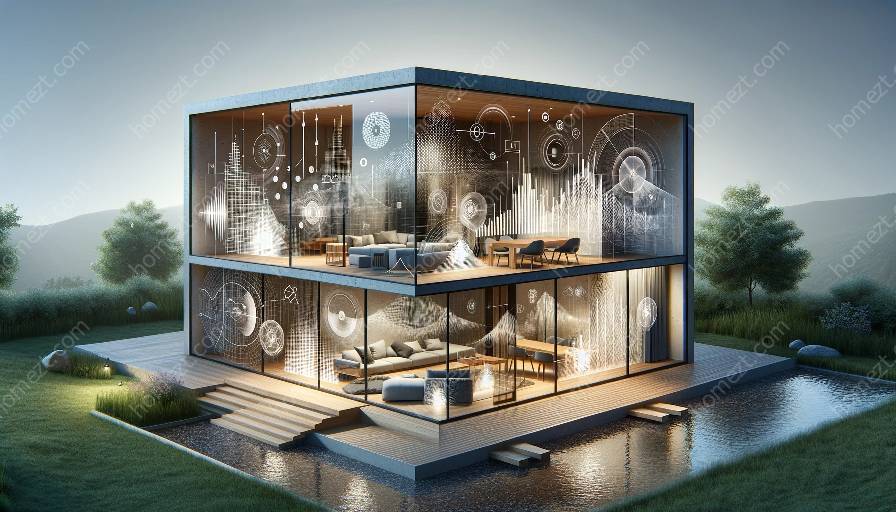Sound propagation in closed spaces is influenced by various factors, with room shapes playing a crucial role in how sound waves travel, reflect, and attenuate. Understanding the complexities of sound and noise in closed spaces is important in optimizing the acoustics of our living environments. This article will delve into the impact of room shapes on sound propagation, explore the fundamentals of sound and noise management in enclosed areas, and provide insights into noise control strategies for homes.
Understanding Sound and Noise in Closed Spaces
Sound is a mechanical wave that travels through mediums such as air, water, or solids. In closed spaces, sound undergoes complex interactions with the room's boundaries, surfaces, and objects, impacting how it propagates and is perceived by occupants. Understanding the behavior of sound in enclosed environments involves examining factors such as reflection, absorption, diffraction, and transmission. The quality of room acoustics is a critical aspect of creating comfortable and functional living and working spaces.
Room Shapes and Sound Transmission
The shape of a room influences the transmission of sound waves. Different room geometries have distinct effects on how sound propagates and interacts with the environment. For instance, rectangular rooms tend to exhibit strong axial modes, leading to louder sound levels at certain frequencies, while irregularly shaped rooms may result in more complex sound field distributions. These variations in sound transmission based on room shapes can impact the overall listening experience and clarity of audio content within a space.
Sound Reflection and Room Geometry
Room shapes also play a role in sound reflection. Flat and parallel surfaces can cause strong reflections, resulting in reverberation and potential sound distortion, especially in smaller rooms. Conversely, non-parallel surfaces and irregular shapes may lead to diffused reflections, contributing to a more balanced and natural ambience. Understanding the interplay between room geometry and sound reflections is crucial for achieving desirable acoustics in residential and commercial spaces.
Noise Control in Homes
Creating a peaceful and quiet living environment is a key consideration for homeowners. Noise control strategies encompass a range of measures aimed at minimizing unwanted sound transmission and improving the overall acoustic comfort within residential spaces. By understanding the impact of room shapes on sound propagation, homeowners can make informed decisions regarding room layout, furnishing placement, and acoustic treatment to enhance the living experience.
Optimizing Room Layout and Design
The layout and design of rooms can significantly affect sound propagation and noise levels. Properly positioning furniture, sound-absorbing materials, and acoustic panels can help mitigate sound reflections and improve the overall sound quality within a home. Additionally, incorporating design elements that break up parallel surfaces and promote diffusion can contribute to a more pleasing acoustic environment.
Acoustic Treatment and Insulation
Applying acoustic treatments such as curtains, carpets, and wall panels can help minimize sound reflections and reverberation, leading to improved speech intelligibility and reduced interference from external noise sources. Furthermore, enhancing the insulation properties of walls and ceilings can effectively attenuate airborne sound transmission, creating a quieter and more comfortable living space.
Technological Solutions
Advancements in home technology offer various noise control options, including soundproofing materials, window treatments, and smart home devices designed to regulate background noise and optimize audio experiences. Integrating these technological solutions can contribute to a more serene and enjoyable residential environment, providing occupants with greater control over their acoustic surroundings.
Conclusion
Room shapes significantly influence sound propagation, reflections, and overall acoustics within closed spaces. By understanding the impact of room geometries on sound transmission and noise control strategies for homes, individuals can create more harmonious and comfortable living environments. Implementing thoughtful room design, strategic acoustic treatments, and leveraging technological advancements can empower homeowners to optimize the acoustics of their living spaces and minimize the intrusion of unwanted noise.





















